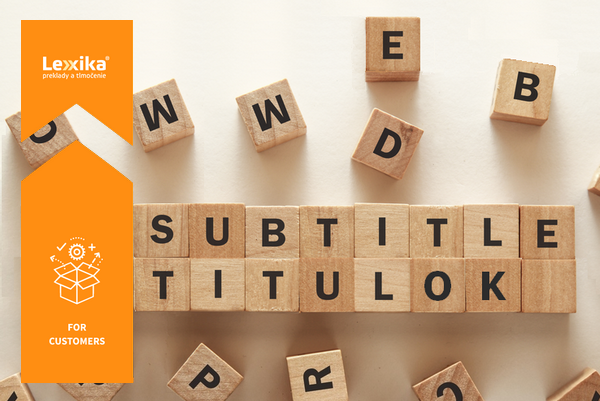
According to the statistics mentioned in our previous article about subtitling, videos are currently on the rise. How exactly did they gain popularity? Videos provide the story with visualization; therefore they are more gripping and entertaining than “just” reading.
Statistics can be convincing and so you decided to create some video content. To appeal to as many people as possible, it is good to think about translation or localization when you create a video. In general, if you plan to translate the subtitles or record a voiceover for your video, you have to think about translation and localization of the video when you create the multimedia content, i.e. the graphic and the video itself. We have prepared five tips for you to always have in mind when localizing.
1. The text in the subtitles will have different lengths
Different languages have different word length. For example, English words are on average 15% shorter than in other languages, while German words are considerably longer. Therefore, after the translation the text will naturally be shorter or longer. If the text is longer and the subtitles flash up very quickly one after the other, it could greatly affect the quality of the final product. For this reason, you should always keep the length of the text in mind.
2. You should time your sound track well
Even when recording the sound for the original video, you should remember that the length of the text will change after translation. You need to precisely time the original sound track, so that the translated speech will not be significantly longer (or shorter) than the original. Thanks to the timestamps, the translator will know how long the individual lines can be and will be able to adjust the translation to the video more accurately.
3. The length of the speech will also change
However, translators are not magicians, and therefore if they want to keep the original meaning, they can only change the length of the text a finite amount. This problem can also be easily resolved, though. If you record the audio and realize that the translation is longer than the source text, you can compensate for the length of the speech by talking faster. On the other hand, if the translated text is shorter than the source text, use more pauses or deliberately talk slower when recording the sound.
4. The font is also important
When choosing a font for the subtitles most of us are interested in the aesthetics and want the final text to be easy to read. However, if we want to localize the subtitles, we must consider what font is used for the target language. The font should support all the characters used in the writing system of the given language or languages.
One final tip: Use universal graphic and musical elements
If you include pictures, icons or music in your video, check whether or not these elements are used abroad, just to be sure. If you create a video that you plan to localize, don’t use metaphorical pictures and symbols, which could have a negative connotation in another culture. Use a more universal solution instead. If needed, it is of course possible to localize musical and graphic elements, but this could increase the budget and the time needed for finalization.
Follow these well-intentioned pieces of advice and you can count on your localized video becoming a great success.

I began my journey at LEXIKA during my university days in 2017. LEXIKA, the people that form part of it, and the translation industry have grown on me since then. One of the day-to-day challenges I have to face is finding new talented translators. Furthermore, I take care of developing good and open relationships with our long-standing translators who make it possible for us to do what we love. Over time, I was put in charge of marketing activities and internal HR. I don’t have to worry about my job turning into a daily grind and I learn something new every day. :)
Share it!
 11.09.2018
11.09.2018